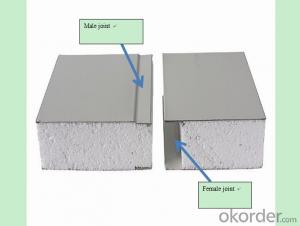Eps Solar Inverter
Eps Solar Inverter Related Searches
Best Inverter Solar Panel Solar Panel On Roof Rack Inverter To Solar Panel Ratio Solar Panel Decking Lights Solar Panel Inverter Box 1000 Watt Solar Panel Inverter 12 Volt Solar Panel Inverter Plastic Solar Lanterns Buy Solar Panel Inverter Solar Panel Inverter CostHot Searches
Type Of Inverter For Solar Types Of Inverter For Solar Used Solar Inverter For Sale Inverter Size For Solar System Solar Edge Inverter For Sale 5kw Solar Inverter For Sale Solar Inverter For Sale Solar Inverter For Battery Solar Inverter For Split Ac Solar Inverter For Laptop Solar Inverter For Fridge Solar With Inverter Price Solar Inverter With 2 Battery Solar Inverter Price In China Best Solar Inverter In China Solar Inverter Price In Dubai Solar Inverter Price In Uae Solar Inverter Price In Kenya Solar Inverter Price In Kerala Solar Hot Water Collectors For SaleEps Solar Inverter Supplier & Manufacturer from China
Okorder.com is a professional Eps Solar Inverter supplier & manufacturer, offers integrated one-stop services including real-time quoting and online cargo tracking. We are funded by CNBM Group, a Fortune 500 enterprise and the largest Eps Solar Inverter firm in China.Hot Products
FAQ
- Solar inverters can generally be used in areas that experience high temperature fluctuations. These inverters are designed to function within a wide temperature range, usually between -20°C to 50°C (-4°F to 122°F), depending on the model. They incorporate temperature protection mechanisms to guarantee their durability and functionality, even in the face of extreme temperature variations. However, it is essential to acknowledge that prolonged exposure to extreme temperatures at the upper or lower limits of their operating range may impact the inverter's performance and lifespan. Consequently, it is crucial to install them correctly and perform regular maintenance to ensure optimal performance in regions with significant temperature fluctuations.
- Yes, a solar inverter can typically be used with different types of solar panels. Solar inverters are designed to convert the direct current (DC) generated by solar panels into alternating current (AC) that can be used to power various electrical devices. As long as the solar panels produce compatible DC voltage and current, they can be connected to the solar inverter regardless of their type, such as monocrystalline, polycrystalline, or thin-film panels. However, it is important to ensure that the solar inverter is appropriately sized and compatible with the total capacity of the connected solar panels for optimal performance.
- Yes, a solar inverter can be used in systems with multiple inverters. In fact, using multiple inverters is a common practice in larger solar power systems. Each inverter is connected to a separate set of solar panels, and they work together to convert the DC power generated by the panels into AC power that can be used in homes or businesses. Multiple inverters allow for increased power output and better system efficiency.
- Yes, a solar inverter can be connected to a computer or smartphone. Many modern solar inverters are equipped with built-in Wi-Fi or Bluetooth capabilities, allowing them to connect to local networks. This enables users to monitor and control their solar system's performance and settings conveniently through dedicated software applications or web interfaces on their computers or smartphones.
- The role of isolation in a solar inverter is to provide safety and protect the user from electrical shocks. It separates the input and output sides of the inverter, ensuring that any faults or disturbances on one side do not affect the other. Isolation also helps to minimize electrical noise and interference, improving the overall performance and reliability of the solar inverter.
- The role of a grid protection relay in a solar inverter is to monitor the electrical grid and protect against any abnormalities or faults that may occur. It ensures the safe and reliable operation of the solar inverter by detecting and isolating faults such as overvoltage, undervoltage, overfrequency, underfrequency, and other grid disturbances. The grid protection relay acts as a safeguard, preventing any damage to the solar inverter and maintaining the stability of the grid connection.
- Yes, a solar inverter can be used in parallel configurations for increased power output. By connecting multiple inverters in parallel, the overall power output can be increased, allowing for the utilization of larger solar arrays and maximizing the energy generation capacity.
- No, not all solar inverters are compatible with all solar panels. The compatibility between inverters and panels depends on factors such as voltage, power output, and technology. It is important to ensure that the inverter and solar panels are compatible to optimize the performance and efficiency of the solar energy system.













































